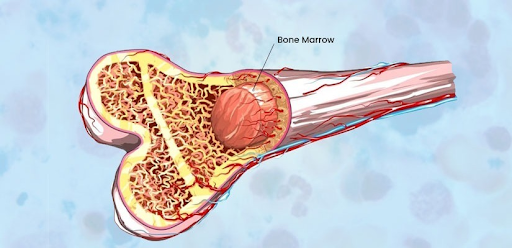
In today’s digital landscape, a strong online presence is crucial for businesses of all sizes. As the internet becomes increasingly intertwined with our daily lives, having a well-designed and functional website is more important than ever. This is where full-service web development comes into play, offering a comprehensive solution to help businesses establish and enhance their online presence. In this article, we will explore the concept of full-service web development, its key components, and the benefits it brings to businesses.
1. Introduction: Embracing the Digital Era
In today’s fast-paced and digitally-driven world, businesses need to adapt and thrive in the online realm. With the increasing number of potential customers turning to the internet to research products and services, a strong online presence has become a prerequisite for success. This is where full-service web development steps in, providing businesses with the tools and expertise to establish a compelling digital presence.
2. Understanding Full-Service Web Development
Full-service web development refers to a comprehensive approach to building and maintaining websites. It encompasses various disciplines and skill sets, including web design, front-end and back-end development, content management systems, e-commerce integration, SEO, responsive design, and ongoing website maintenance and support.
3. The Key Elements of Full-Service Web Development
3.1 Web Design and User Experience
At the heart of full-service web development is web design, which focuses on creating visually appealing and user-friendly interfaces. A well-designed website not only captivates visitors but also ensures seamless navigation and easy access to information.
3.2 Front-End Development: Bringing Designs to Life
Front-end development involves turning design mockups into interactive web pages. This process utilizes HTML, CSS, and JavaScript to bring visual elements to life and provide an engaging user experience.
3.3 Back-End Development: The Backbone of Your Website
Back-end development focuses on the behind-the-scenes functionality of a website. It involves server-side programming, database management, and the integration of various technologies to ensure the website runs smoothly.
3.4 Content Management Systems (CMS)
Content Management Systems (CMS) enable businesses to manage and update their website content without extensive technical knowledge. A user-friendly CMS empowers businesses to make changes effortlessly, keeping their website up-to-date and relevant.
3.5 E-commerce Integration
For businesses looking to sell products or services online, e-commerce integration is a vital component of full-service web development. This involves implementing secure payment gateways, shopping carts, and inventory management systems to facilitate online transactions.
3.6 Search Engine Optimization (SEO)
SEO plays a crucial role in driving organic traffic to a website. Full-service web development incorporates SEO best practices to optimize websites for search engines, ensuring higher visibility and better rankings in search results.
3.7 Responsive Design: Reaching Every Device
In an era where mobile devices dominate internet usage, responsive design is essential. Full-service web development ensures that websites are optimized for various screen sizes, providing a seamless browsing experience across desktops, tablets, and smartphones.
3.8 Website Maintenance and Support
A website is not a one-time project; it requires ongoing maintenance and support. Full-service web development includes regular updates, bug fixes, security monitoring, and technical assistance to keep the website functioning optimally.
4. The Benefits of Full-Service Web Development
4.1 Streamlined Process and Project Management
By opting for full-service web development, businesses benefit from a streamlined process and efficient project management. With a single team overseeing all aspects of web development, communication is enhanced, and projects can be executed seamlessly.
4.2 Customized Solutions for Unique Needs
Full-service web development allows businesses to create customized solutions tailored to their unique needs. From design aesthetics to functionality and features, every aspect of the website can be customized to align with the brand and business goals.
4.3 Enhanced User Experience and Engagement
With a focus on user-centric design, full-service web development aims to enhance user experience and engagement. By creating intuitive interfaces, fast-loading pages, and easy-to-use functionalities, businesses can provide visitors with a positive and memorable experience.
4.4 Scalability and Future-Proofing
Full-service web development takes scalability and future-proofing into account. Websites are designed and built with growth in mind, ensuring that they can accommodate increasing traffic, additional features, and technological advancements in the future.
4.5 Improved Search Engine Visibility and Rankings
SEO is an integral part of full-service web development. By implementing SEO best practices, websites are optimized for search engines, leading to improved visibility and higher rankings in search results. This, in turn, drives more organic traffic and increases the chances of attracting potential customers.
5. Conclusion
In today’s digital age, full-service web development has become indispensable for businesses aiming to succeed online. By leveraging the expertise of professionals in web design, development, SEO, and maintenance, businesses can establish a robust and effective online presence that drives growth, engages users, and ultimately leads to success.
FAQs (Frequently Asked Questions)
Q1: What is full-service web development?
Full-service web development refers to a comprehensive approach to building and maintaining websites. It encompasses various disciplines and skill sets, including web design, development, SEO, and ongoing support.
Q2: Why is web design important?
Web design is crucial as it determines the visual appeal and user experience of a website. A well-designed website enhances engagement, builds trust, and encourages visitors to explore further.
Q3: How does full-service web development benefit businesses?
Full-service web development benefits businesses by providing a streamlined process, customized solutions, enhanced user experience, scalability, and improved search engine visibility.
Q4: What is responsive design?
Responsive design ensures that websites adapt and display correctly across different devices, such as desktops, tablets, and smartphones. It provides a seamless browsing experience and accommodates the growing number of mobile users.
Q5: What is the role of SEO in web development?
SEO (Search Engine Optimization) is the practice of optimizing websites to rank higher in search engine results. It helps drive organic traffic, improve visibility, and increase the chances of attracting potential customers.








